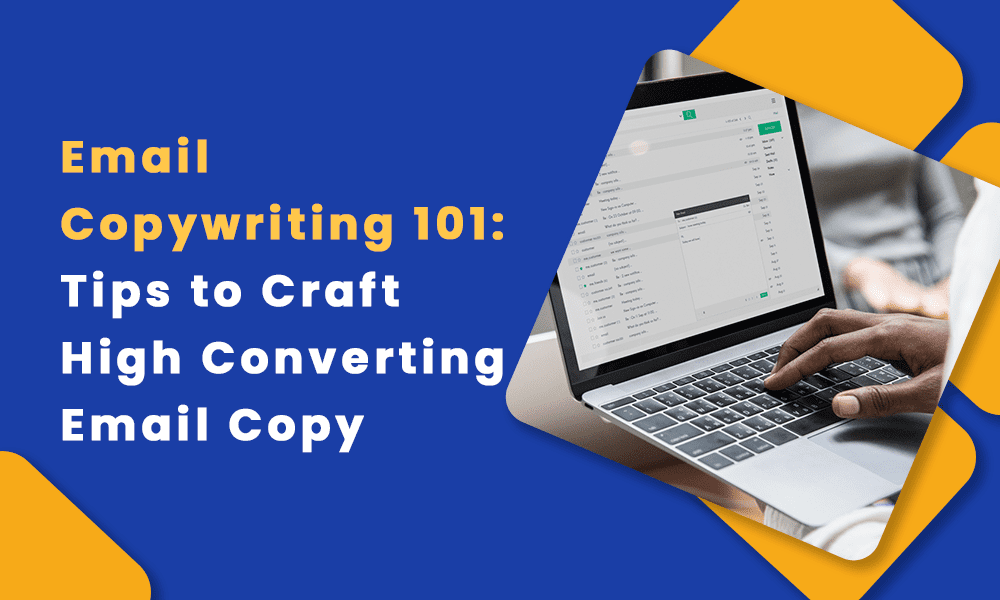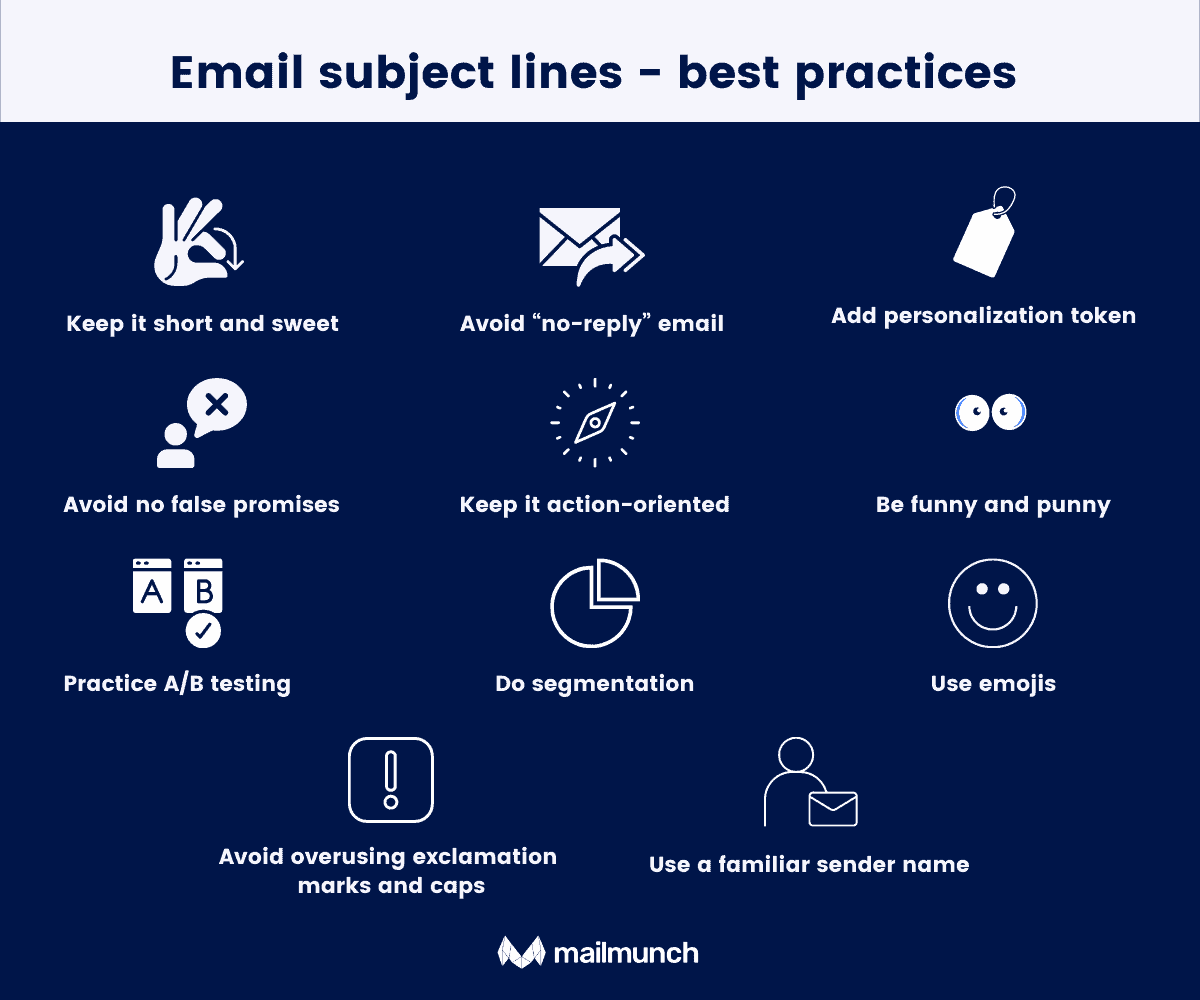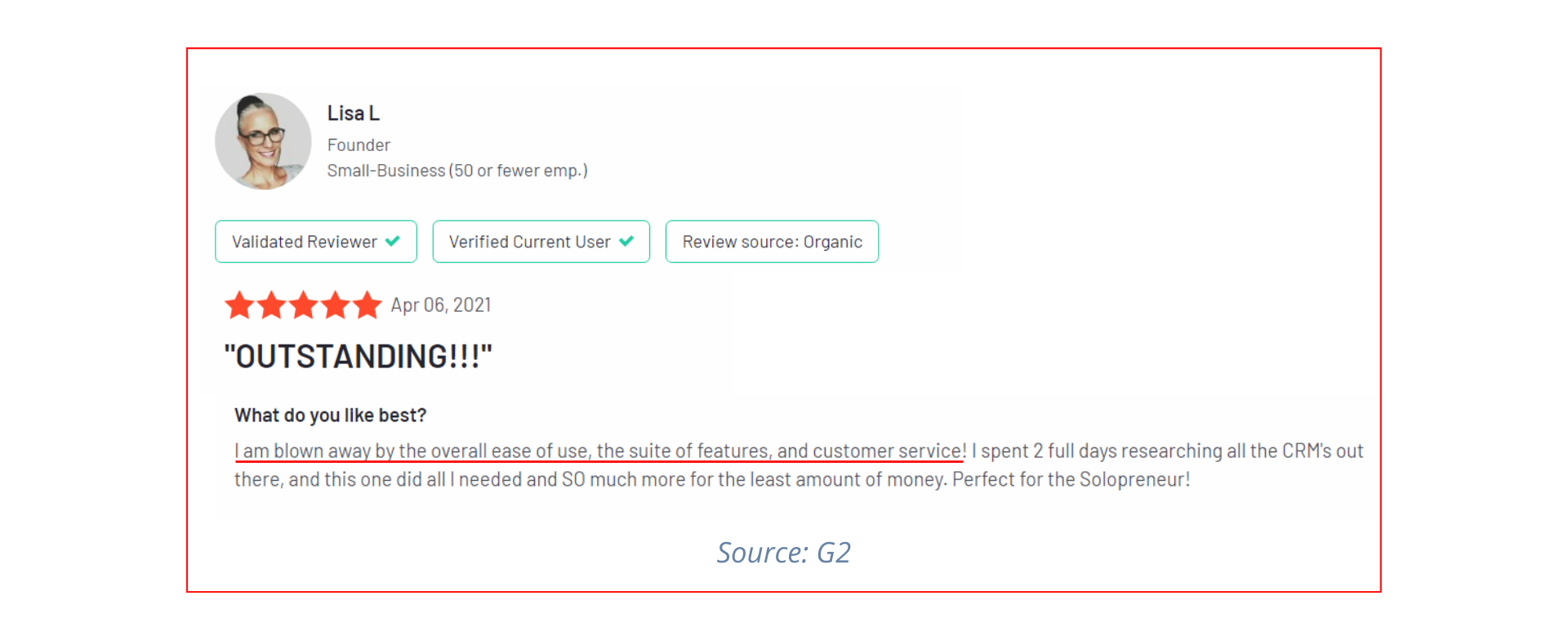Seven seconds is all you have to impress your readers. Think about that for a minute — readers are bombarded with dozens (if not hundreds) of emails every day.
Every. Single. Day.
With this being the case, how can you get people to open your emails? By writing the perfect email copy.
In this blog post, I have shared five email copywriting best practices that you can start implementing right away.
Let’s dive in.
Table of Contents
What is Email Copywriting?
Email copywriting is — in the simplest form — the process of crafting an email for prospective and current customers with the intention to get them to take some action.
Usually, good email copies have strong, compelling calls to action.
When writing an email copy, you must present your message concisely and make the best use of email subject lines.
Think about this: You might get hundreds of emails every day, but do you want to read them all?
Not really!
You just want to read a handful of them, and those are the ones that engage you the most and clearly illustrate the core message.
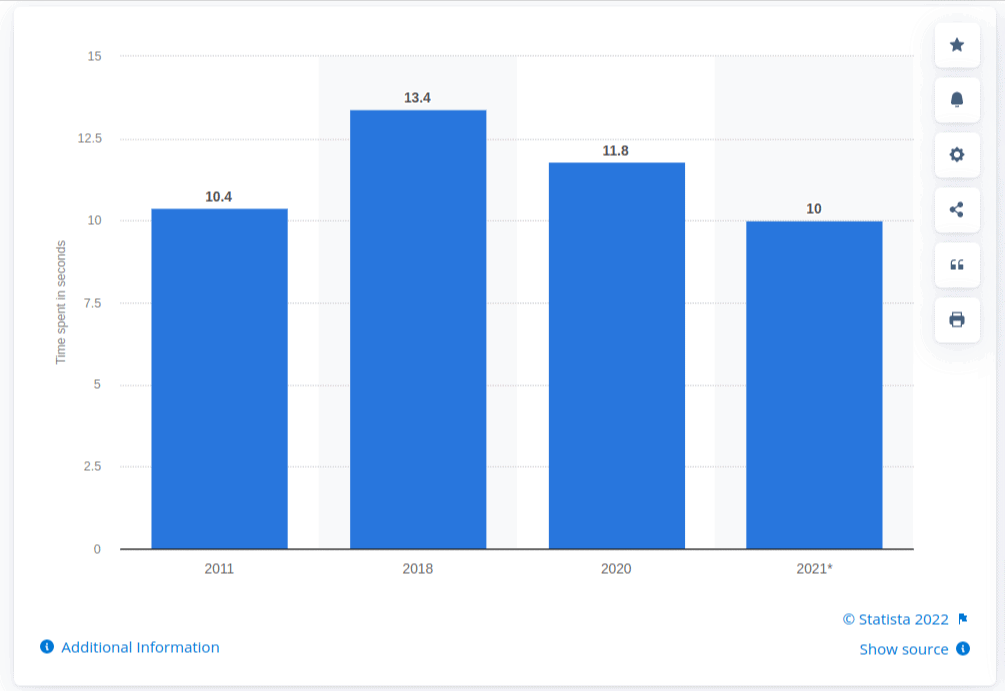
Unlike other forms of branded copy, email copywriting is unique in the sense that it mainly focuses on well-crafted subject lines that immediately motivate the reader to click open the email.
When you start seeing great email open rates, you can give credit to your email copy.
However, it is not an easy task.
Crafting short, concise, and engaging email copy is a skill achieved through practice — and an understanding of your target audience.
Fret not, for we have the best tips to make your email copywriting stand out.
5 Email Copywriting Tips For Rapid Lead Generation
We’ve compiled five of the best email copywriting tips to help you craft attractive emails and make the process considerably less time-consuming and stressful.
- Write catchy subject lines
- Don’t neglect the preview text
- Choose your tone carefully
- Keep the language simple
- Stay relevant
Write catchy subject lines
Just like copywriters add a catchy and converting headline in their branded copy, you must add an eye-catching subject line in your email copy.
It has to be relevant, interesting, appealing, and inspirational enough to motivate readers — and compel them to take action.
Writing eye-catching email subject lines is the most important email copywriting task.
That said, making an excellent subject line requires time, creativity, and above all, data on your target audience.
Two points to keep in mind when crafting the perfect subject line:
- It must be incredibly catchy
- It should contain no more than 10 words
If you often read emails on your mobile device, you’ve probably noticed that emails sometimes contain really short subject lines. That’s because they are optimized for mobile usage.
Here are a few key points that you must keep in mind if you want to write compelling subject lines:
Source: Mailmunch
Note: In the text on this image, ‘Avoid no false promises’ is a typing error. The good folks at Mailmunch meant to say ‘Make no false promises’ or ‘Avoid making false promises’ 😅
- People do not like to read marketing emails for an extended period. Therefore, the subject line cannot be more than 10 to 12 words long. Short subject lines are mobile-friendly and appear perfectly well on mobile devices.
- The most important thing is to use straightforward language that the target audience can comprehend, and include a call-to-action like “Don’t miss out!” — something that speaks of urgency. These CTAs can create FOMO and get readers to click open your emails.
- You’ll get more opens if you include genuine names. Personalization is all the rage these days. For readers, receiving an email from a real person rather than a business is a welcome change.
Read also: What Is An Email Header? 6 Email Header Examples To Learn From
Never neglect the preview text
An email copywriter is responsible for persuading readers to go past the subject line.
Your actual email message can be displayed below the subject line in the inbox of the subscriber, or you can choose to add a preview text.
See:
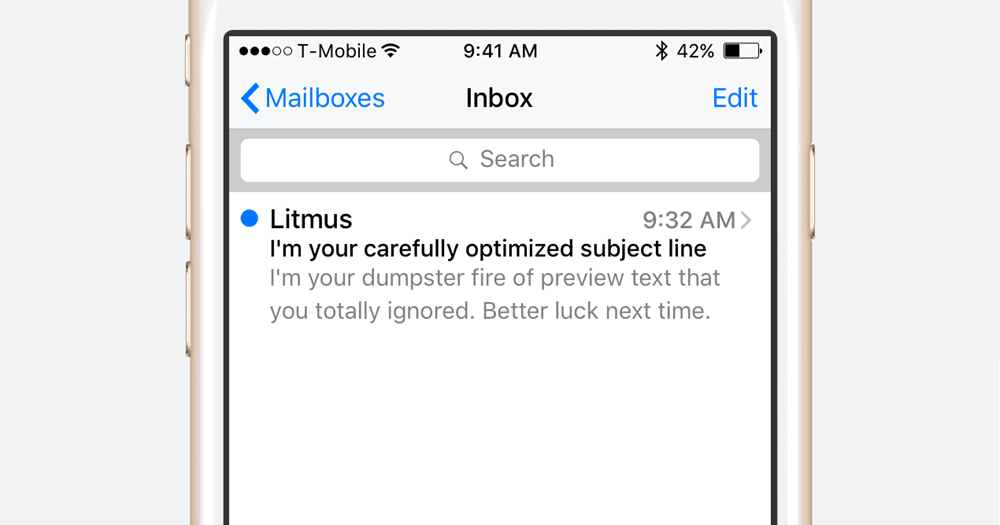
The preview text is offered as a feature in most marketing tools. You’ll get to add it just when you’re drafting your subject line.
Like the subject line, the preview text also helps the reader determine whether or not the email is worth reading.
Remember that you should not make false commitments. You must fulfill any promises you make in your subject line and preview text.
Give your email subscribers a clear impression of what is in the email by using that little excerpt. If it’s interesting to them, they’ll probably open it.
Remember to keep the preview text crisp and catchy.
Read also: How to Send Out Thank You For Your Order Email (Examples & Templates)
Be conversational and friendly
Email marketing paves the way for personalization. This is your chance to stay ahead of the competition.
So while crafting an email copy, you must be careful and try to keep it as personal as possible. This way, you will have greater chances of clickthroughs, which in turn means more leads.
Being conversational, friendly, and personal is key to a successful email copy.
In fact, studies have shown that personalized emails are 26% more likely to be opened compared to those without personalization.
Use the pronouns “you” and “you’re” frequently in your email body. This will signal to your readers that the email is about them — and not your business.
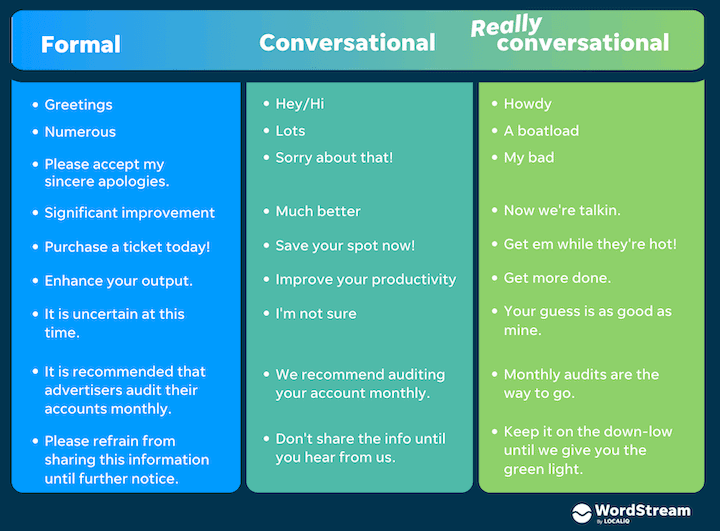
Additionally, you should emphasize the advantages of your service rather than its characteristics. When discussing features, you, your business, and your product are in the spotlight.
Instead of focusing on what your product is or has, create email copy that talks about:
Why should the prospect choose your product?
The emphasis should be on how your product or service can improve the lives, careers or businesses of people reading the email.
Talking about advantages rather than features places the focus of your email on your subscribers instead of your business, and readers like to see that in their inboxes.
Read also: eCommerce Email Copy: 12 Tricks to Drive More Conversions
Keep the language simple
You shouldn’t rant or use rigid terminology to show off — industry jargon is a very bad idea when it comes to writing emails.
After all, who cares about all this? Customers want solutions — and that should be your focus. You should be realistic and offer useful content that is easily digestible.
Otherwise, you’re just nudging your readers closer to the ‘Unsubscribe’ button.
We at EngageBay have a motto: write for the 7th grader.
That’s how simple your language should be.
It is a common observation that technical language is confusing for most people. Take a look at this example:
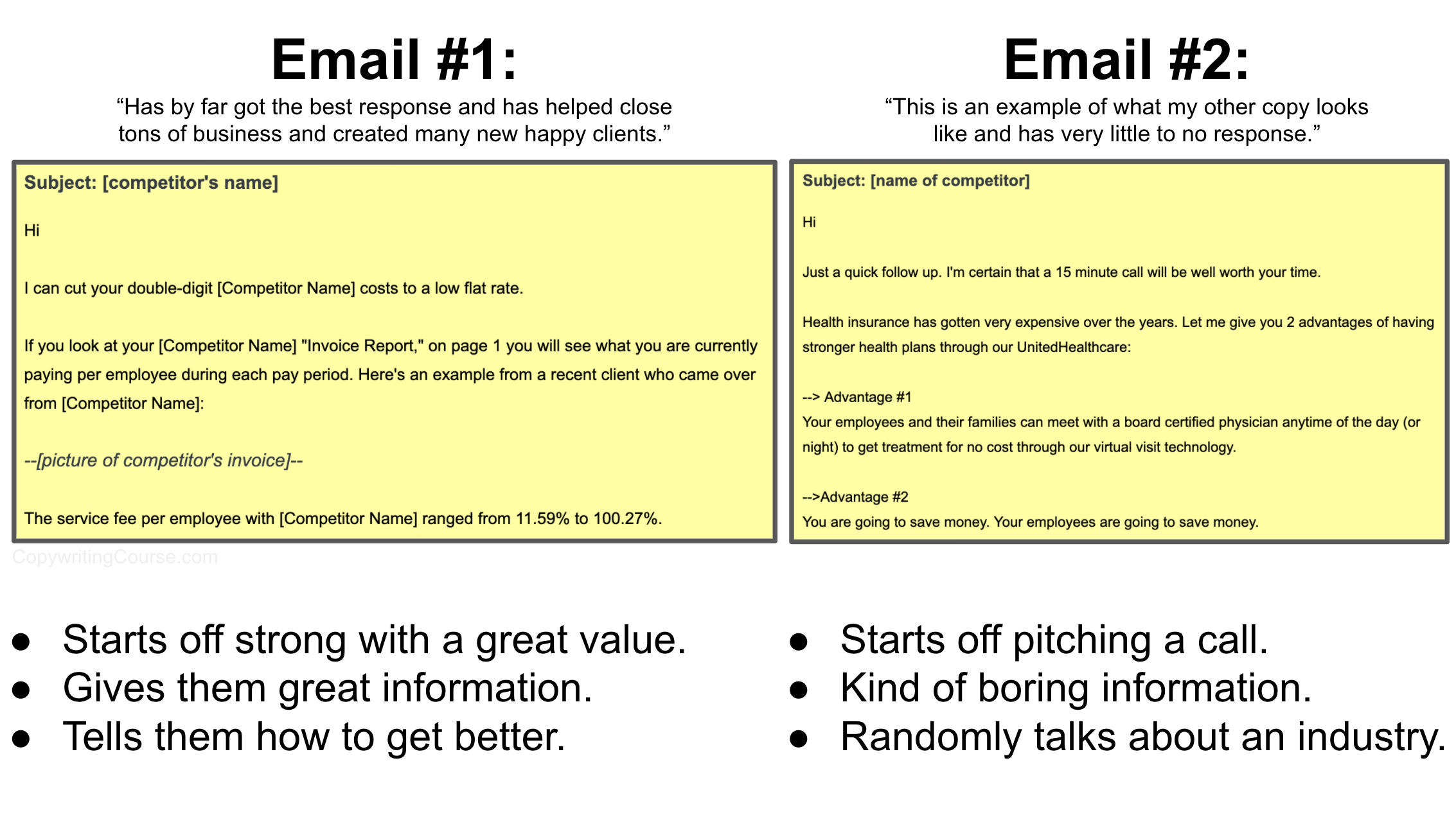
Your copy should show how your products or services can save the reader money and time, or solve some other specific problems.
Read also: Master the Art of Copy With These Great Copywriting Examples
Stay relevant
Building relationships with consumers and communicating with them honestly and sincerely are key components of email copywriting.
People do not want to read email content that is not particularly created for them. Avoid broad or general language.
Instead, divide your subscribers list into categories according to their behavior, preferences, and other characteristics that are appropriate for your business.
This way, you can create email content that’s relevant to each group or list of subscribers. If you send out emails that have no relevance to some of the subscribers, you risk getting blocked by them.
Read also: How to End an Email Appropriately: Tips & Examples
Wrap Up
We’ve seen five of the best tips to ace your email copywriting process.
Writing engaging, clear, and useful copy should be an integral part of your email marketing strategy.
To put it bluntly, each word matters in your email copy. Once you have 100 words in your copy, tighten it and reduce it to 50 words … and then try to shorten it to 25 words.
You get the gist, right?
With this out of the way, we have something exciting for you!
An integral part of great email copywriting is the ability to understand your audience on a deeper level. To do this, you need an email marketing tool that helps you segregate your audiences, try A/B testing, schedule email broadcasts for different time zones, and more.
Plus, you need a software solution that can help you manage your email campaigns, automate email marketing processes, and personalize your email copies.
Enter EngageBay: an all-in-one marketing, sales, and customer support tool designed specifically for small businesses and startups. For just a dollar a day, you can grow your audience, engage with them, and convert them into paying customers.
With EngageBay, you get marketing automation, social media management, email A/B testing and free email and landing page templates to create the best emails and track all your email campaigns from one place.
Lauraine M, a small business owner, uses EngageBay to take her business forward:
Thousands of small businesses and startups love EngageBay for its ease of use, affordability, and pro features. Hear from a couple of them:

Sign up now or book a 30-minute demo with our experts at a time of your convenience.
👉Empower your email marketing with the best trigger email strategies – learn more in our expert guide! 💪
